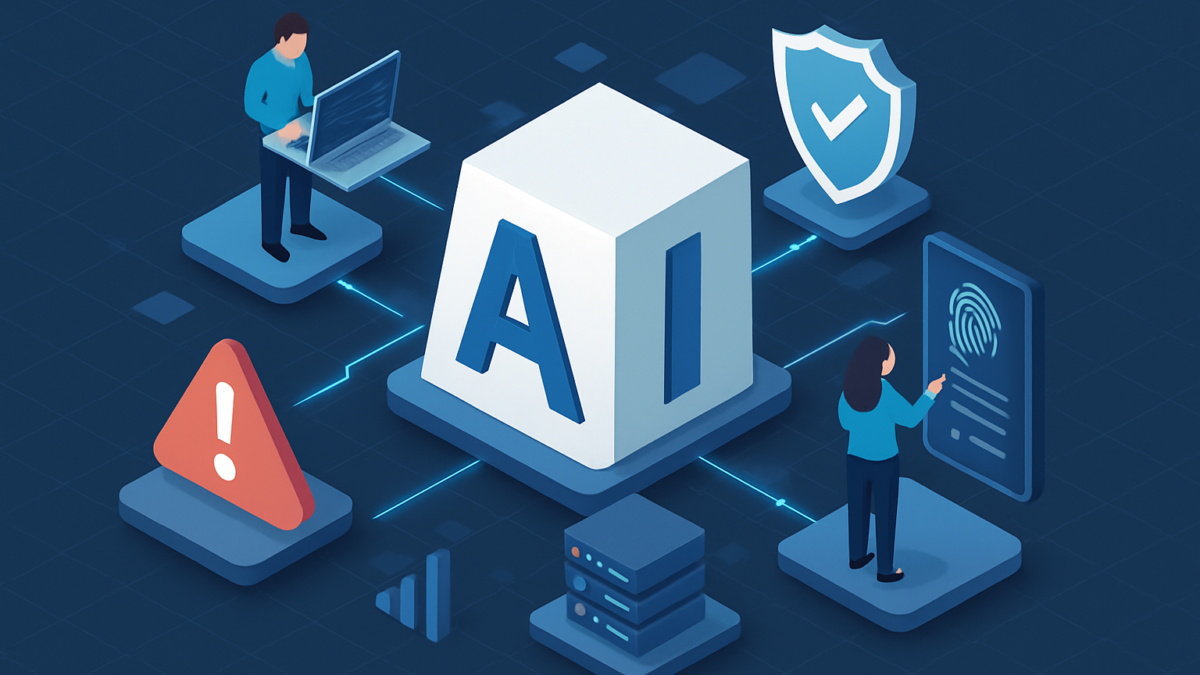AI in Enterprise IT: How Machine Learning Is Transforming Risk, Security & Operations in 2025
Artificial Intelligence (AI) and Machine Learning (ML) are no longer futuristic concepts—they’re core components of modern enterprise IT strategies. Organizations are increasingly leveraging AI to enhance security, streamline operations, and manage risk in an era defined by complex digital ecosystems.
As enterprises embrace AI-driven IT solutions, understanding the key applications, benefits, and emerging trends becomes crucial for IT leaders, CIOs, and decision-makers.
1. AI-Powered Risk Management
Machine learning algorithms are transforming risk management by identifying patterns and predicting potential issues before they escalate.
Applications:
- Predictive analytics to anticipate system failures or security breaches.
- Risk scoring for IT assets and infrastructure.
- Automated compliance monitoring for regulatory requirements.
Example: Financial institutions use AI to detect anomalies in transaction data, minimizing fraud and operational risk.
Impact: Enterprises can proactively address vulnerabilities, reducing downtime and potential financial loss.
2. AI-Enhanced Cybersecurity
Cyber threats are evolving, and traditional IT defenses are no longer sufficient. AI-driven cybersecurity tools can detect threats in real-time and respond autonomously.
Key Innovations:
- ML-based anomaly detection to flag unusual activity.
- Threat intelligence systems that predict potential attacks.
- Automated incident response to reduce human intervention and response time.
Case Study: Companies like Microsoft and IBM are integrating AI into endpoint protection and network monitoring, achieving faster threat mitigation and reduced breach impact.
3. Optimizing IT Operations with AI
AI and ML are transforming enterprise IT operations (AIOps) by automating routine tasks and optimizing resource management.
Use Cases:
- Predictive maintenance for servers and cloud infrastructure.
- Automated monitoring of network performance.
- Intelligent workload distribution across hybrid cloud environments.
Benefits:
- Increased operational efficiency.
- Reduced human error.
- Faster problem resolution, improving overall business continuity.
4. AI-Driven Decision Making
AI supports strategic decision-making in IT by providing actionable insights from large volumes of data.
Applications:
- Resource allocation and capacity planning using predictive models.
- Performance analysis and trend forecasting for IT infrastructure.
- Scenario simulations to evaluate risk and ROI of technology investments.
Impact: Enterprises can make data-backed decisions faster, improving agility and competitiveness.
5. Integrating AI Across Hybrid & Multi-Cloud Environments
Enterprises are increasingly adopting hybrid and multi-cloud architectures, creating complex IT ecosystems.
AI applications in cloud IT:
- Dynamic resource management across multiple clouds.
- Intelligent cost optimization and usage forecasting.
- Enhanced security monitoring with ML-driven analytics.
Example: Companies using AWS, Azure, and Google Cloud integrate AI solutions for predictive scaling and automated compliance checks.
6. Emerging AI Trends in Enterprise IT for 2025
Several AI trends are expected to shape enterprise IT strategies this year:
- Explainable AI (XAI): Making AI decisions transparent and auditable.
- AI-Powered IT Helpdesks: Chatbots and virtual assistants to streamline internal IT support.
- Autonomous Networks: Self-managing IT networks that detect and resolve issues independently.
- AI for Regulatory Compliance: Automating audits and reporting across complex industries.
These trends indicate a shift toward proactive, intelligent, and adaptive IT systems that reduce risk and improve operational efficiency.
7. Measuring AI ROI in Enterprise IT
To ensure success, enterprises must measure the impact of AI initiatives on IT operations and business outcomes:
- Operational Metrics: System uptime, mean time to resolution (MTTR), and efficiency gains.
- Security Metrics: Number of detected threats, response times, and incident reductions.
- Business Metrics: Cost savings, productivity improvements, and compliance adherence.
By tracking these metrics, IT leaders can demonstrate tangible value from AI investments and refine strategies for maximum impact.
Conclusion
AI and machine learning are redefining enterprise IT, enabling organizations to manage risk, secure infrastructure, and optimize operations with unprecedented efficiency.
In 2025, businesses that adopt AI-driven IT strategies will gain agility, resilience, and competitive advantage in a digitally accelerated market.
Want your enterprise insights and thought leadership to reach the right tech decision-makers?
Leverage iTMunch’s B2B Content Syndication Service to distribute your content across premium platforms, generate qualified leads, and amplify engagement.
You May Also Like: The Hidden Value of Niche Whitepaper Platforms vs. General Content Aggregators





